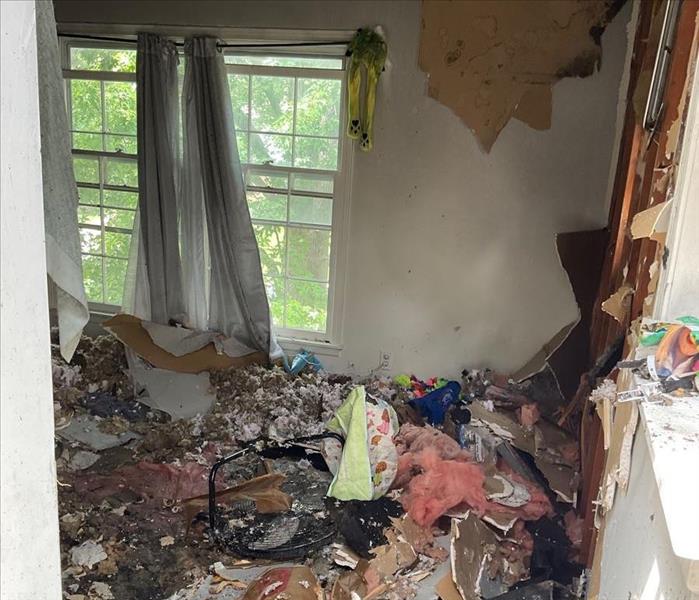Restoring Fire-Damaged HVAC Systems
12/13/2023 (Permalink)
 At SERVPRO® of Downtown Kansas City, we have the expertise and experience to handle the complexities of fire damage restoration.
At SERVPRO® of Downtown Kansas City, we have the expertise and experience to handle the complexities of fire damage restoration.
A fire in your home or business is a distressing experience. While the immediate damage from flames and smoke is evident, one often overlooked aspect is the impact on your HVAC system. Fire-damaged HVAC systems can pose both safety and operational risks, making it essential to address them promptly. In this blog, we'll explore the significance of restoring fire-damaged HVAC systems, the risks involved, and the steps to take to bring back comfort and safety to your space.
Understanding the Impact of Fire on HVAC Systems
Fires can affect HVAC systems in multiple ways:
Direct Damage: The intense heat of a fire can melt or warp components of the HVAC system, rendering it inoperable.
Smoke and Soot: Smoke and soot can infiltrate the HVAC ducts, contaminating the entire system. This not only affects air quality but can lead to foul odors and further damage.
Water Damage: The water used to extinguish the fire can infiltrate HVAC components, causing corrosion and electrical issues.
Risks of Neglecting Fire-Damaged HVAC Systems
Neglecting fire-damaged HVAC systems can have serious consequences:
Safety Concerns: Damaged electrical components may pose a fire hazard or risk of electrical shock.
Air Quality: Contaminated HVAC systems can spread smoke and soot throughout the building, compromising indoor air quality and affecting the health of occupants.
Operational Efficiency: Inoperable HVAC systems can disrupt the comfort and functionality of your space.
Steps to Restore Fire-Damaged HVAC Systems
- Before assessing or attempting any restoration, ensure the area is safe to enter. Professionals should handle any electrical or structural concerns.
- Engage a certified HVAC technician to assess the extent of the damage. They will evaluate the components and the ductwork for damage, and recommend the best course of action.
- A thorough cleaning and decontamination process is crucial to remove smoke, soot, and odors from the system. Professional restoration services, like SERVPRO®, have the expertise and equipment for this task.
- Depending on the assessment, the technician will repair or replace damaged components. This may involve fixing or replacing ductwork, fans, or electrical elements.
- After repairs, the HVAC system needs to be thoroughly tested and balanced to ensure it functions efficiently and safely.
- It's essential to conduct air quality testing to ensure that the system is not circulating contaminants throughout the building. This step guarantees a safe and healthy indoor environment.
Restoring fire-damaged HVAC systems is a crucial aspect of fire damage recovery that should not be overlooked. Neglecting the impact on your HVAC system can compromise safety, indoor air quality, and operational efficiency. If you've experienced a fire-related incident, it's essential to engage professionals to assess and restore your HVAC system. At SERVPRO® of Downtown Kansas City, we have the expertise and experience to handle the complexities of fire damage restoration, including HVAC systems. Our priority is your safety, comfort, and peace of mind!



 24/7 Emergency Service
24/7 Emergency Service